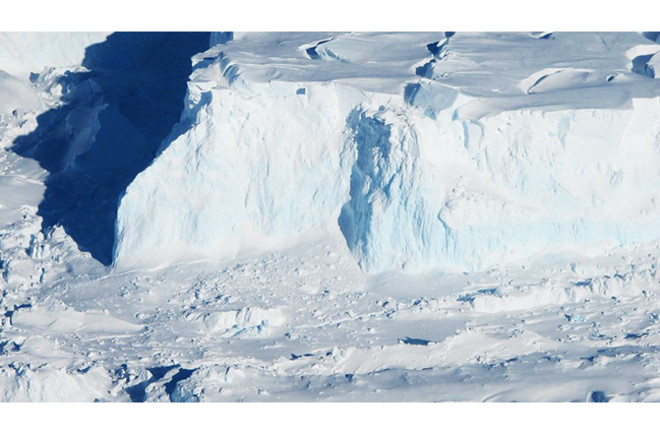The extent of sea ice around Antarctica has reached a record low level — for the second Southern Hemisphere summer in a row.
This year’s low is 405,000 square miles below the 1981 to 2010 average minimum extent of sea ice around Antarctica, according to the National Snow and Ice Data Center. That amount of ice loss is equivalent to more than half of the land area of Alaska.
As Antarctic sea ice shrivels, it opens the way for waves to violently pound ice shelves that hold back the flow of giant glaciers — some of which are already at risk of disintegrating and contributing significantly to sea level rise, according to the NSIDC.
"The sea ice helps to buffer large floating ice shelves and major outlet glaciers such as Pine Island and Thwaites, and if these glaciers begin a more rapid runaway loss of land ice, it could trigger a dramatic increase in sea level rise rates before the end of this century," says Julienne Stroeve, an NSIDC scientist, quoted in a release.
The animation of satellite images above shows a striking difference in sea ice extent adjacent to the Thwaites and Pine Island glaciers. One image shows the waters choked with ice in February of 2015, a year with a higher than average extent. The other was captured in February of this year, and the amount of sea ice is vanishingly small.
This year's image also reveals a large iceberg below and to the right of center. The berg, designated B-22A, and currently about four times the size of New York City, broke from the ice shelf of the Thwaites Glacier way back in March of 2002. It then became stuck, or “grounded,” in this relatively shallow part of the Amundsen Sea. For 20 years it remained stuck there — until January, when it began floating away.
Research has shown that when it was grounded, the iceberg played an important role in stabilizing sea ice in the area. In some years, a band of landfast sea ice (also called "fast" ice) stayed anchored to the iceberg and the ice shelf of the Thwaites Glacier, helping to buttress the glacier and slow its flow toward the sea, according to NASA.
Doomsday is Not Nigh, But Still...
With sea ice shrinking, and another massive iceberg floating away, the situation is becoming more precarious for the glacier, which media have hyperbolically labelled the "Doomsday Glacier." Although doomsday is not nigh (at least not from the glacier!), Thwaites is dumping huge amounts of ice into the ocean, thereby contributing about 4 percent to the rise of sea level globally — about 1.5 inches per decade.
Like a cork in a bottle, the Thwaites glacier — about the size of Florida — helps to hold back the West Antarctic Ice Sheet, one of two on the continent. But the cork's grip has been weakening. This has happened as the floating shelf of ice that extends from the Thwaites Glacier out over the water has been eaten away from below by warming sea water.
Should the Thwaites Glacier disintegrate, global sea level would rise by about two feet. That disintegration would, in turn, destabilize much of the rest of the West Antarctic Ice Sheet. It holds enough ice to raise sea levels by more than 10 feet.
Scientists call this a "collapse," but that word is keyed to the geologic timescale. In reality, the rise in sea level would play out over centuries.







